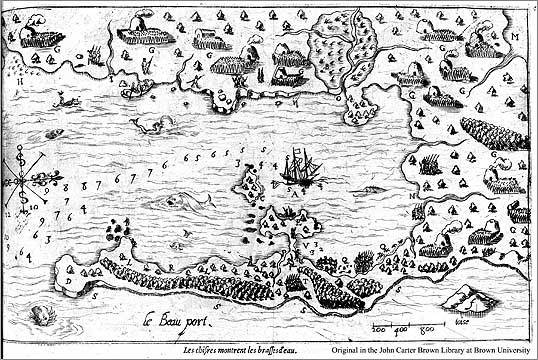Champlain was hereAmerica's founding myth tells of the Puritans landing in wild, uncharted lands. Yet a French explorer had already mapped the territory in exquisite detail.By 1620, when the Pilgrims arrived on the Mayflower, Champlain had accomplished nearly everything for which he is famous. He had crisscrossed the Atlantic dozens of times (29 times before his death in 1635), he had penetrated deeply into the hinterland, and he had glimpsed--and named--most of the harbors, rivers, and capes that we rediscover every weekend of the summer. It is startling to return to his maps, and see the familiar contours of Cape Cod, Cape Ann, and Boston Harbor, all included as part of an American region that was anything but "New England." Given his natural inclination to roam, there is every reason to believe that Champlain might have started French settlements hundreds of miles to the south if he had been given more support from the French crown. As it was, he did a great deal more than most Americans realize to delineate the coastlines of Maine and Massachusetts, along with huge swaths of Vermont and New York.
The richness of French history in North America has been neglected in recent generations, although there was once a time, not so many generations ago, when names like Champlain and Verrazano (who sailed for France, and named Rhode Island) were remembered with enthusiasm. It would not quite be right to call Champlain obscure--after all, he has an enormous lake named after him. But for most of us, he sits on a list of explorers and early settlers to be memorized somewhere around age 13, and then forgotten.Comment: This narrative undermines our national Thanksgiving Day myth. For more on the subject, see
Ten Little Pilgrims and Indians.



No comments:
Post a Comment